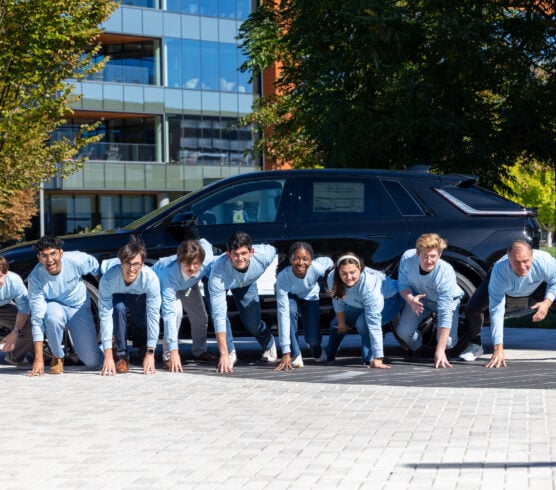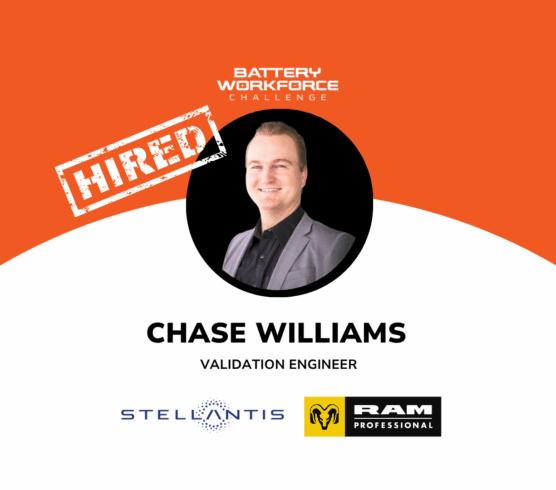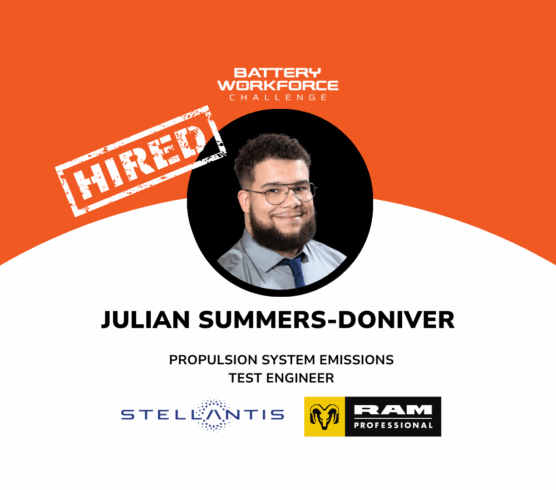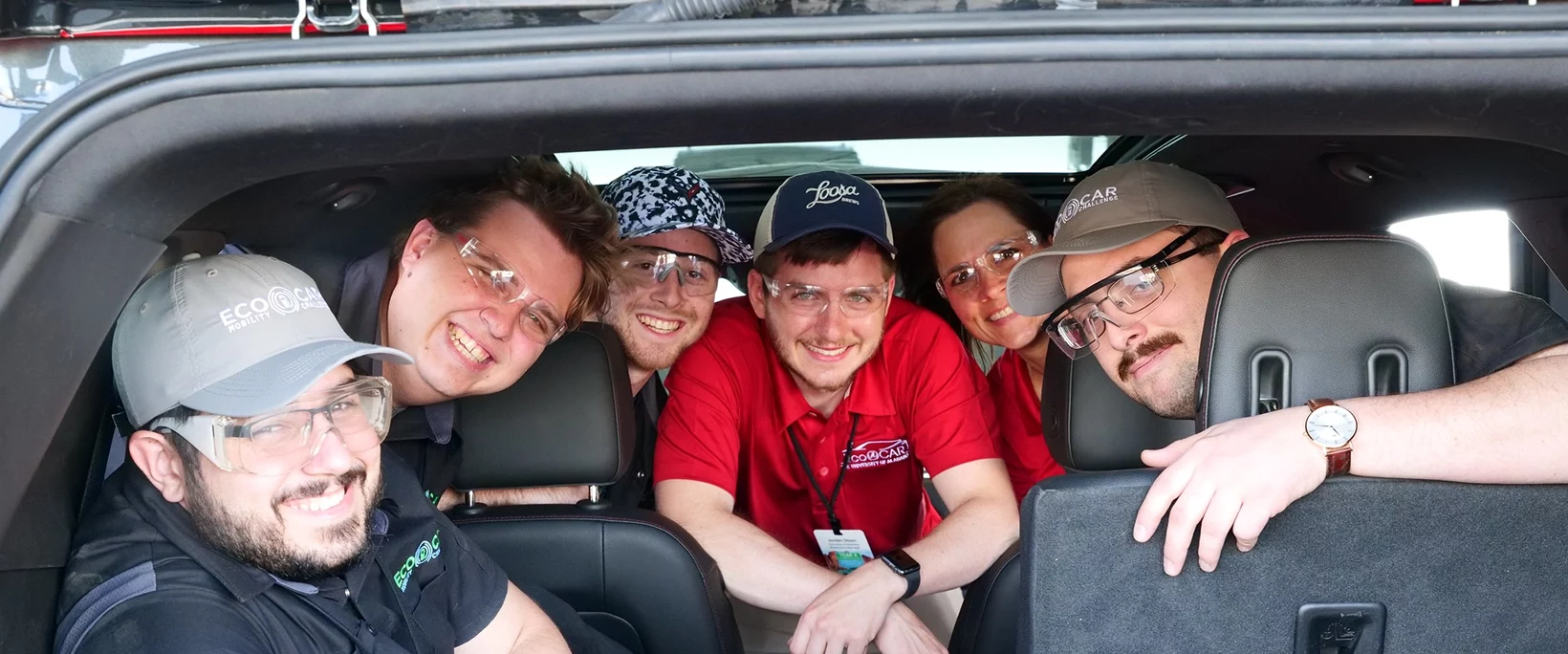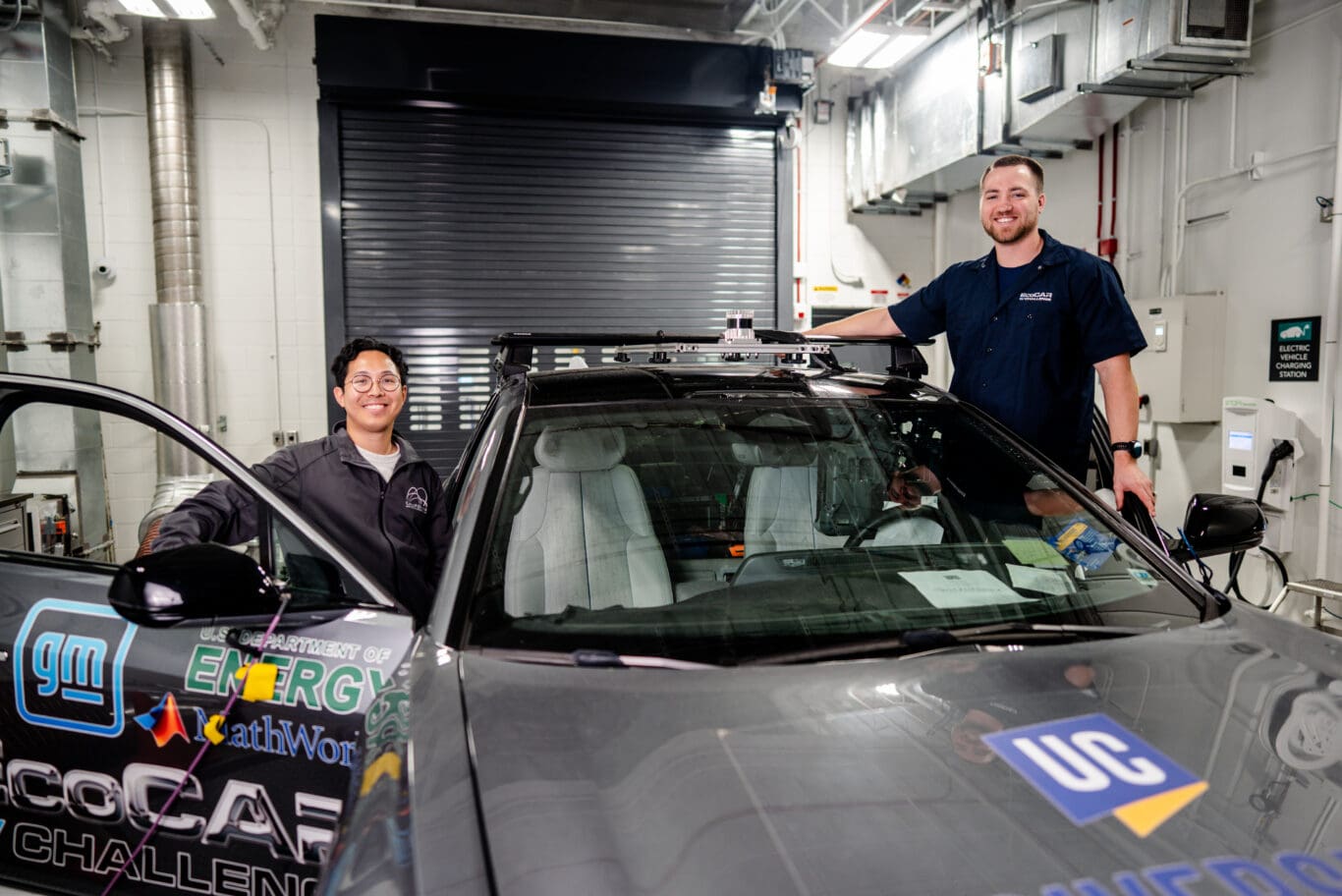
Written by: Ashley Kronsell Oller
Last month, EcoCAR hosted the Year 3 Dynamometer Testing Event at the California Air Resources Board (CARB) Mobile Source Laboratory in Riverside, CA, marking a critical milestone in the EcoCAR EV Challenge. This event provided teams with a rare and invaluable opportunity to test their prototype vehicles (the 2023 Cadillac LYRIQ) in a highly controlled, state-of-the-art environment, simulating real-world conditions for Connected and Automated Vehicle (CAV) technologies.
Throughout the event, students worked side by side with engineers from CARB, General Motors, MathWorks, Argonne National Laboratory, and other industry sponsors, gaining hands-on experience in dynamometer testing and energy consumption. This collaboration not only propelled the technical progress of each team’s Cadillac LYRIQ but also played a key role in shaping the future of engineering by equipping students with the skills and knowledge needed to drive research and product innovations in automotive technologies.
Testing CAV Features in a Controlled Environment
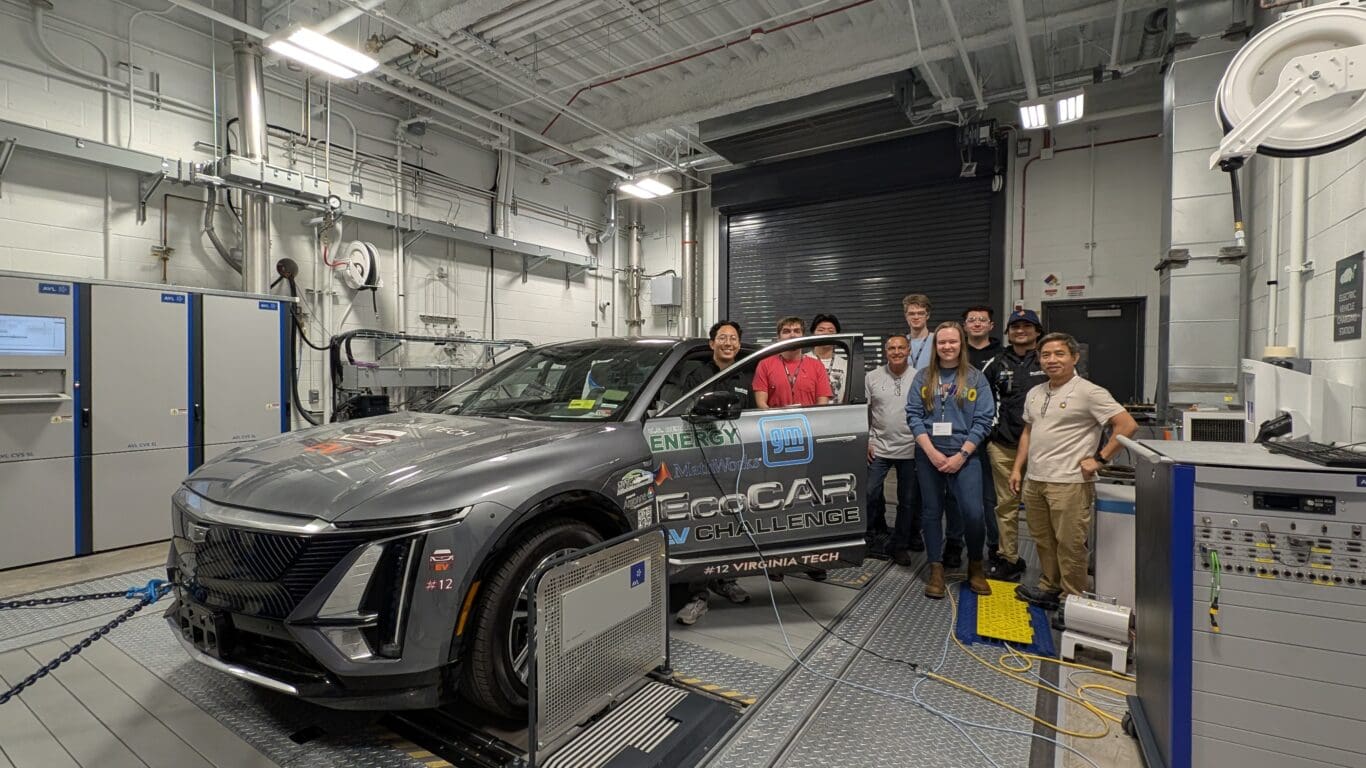
As part of the EcoCAR CARB Dyno Testing Event, teams had the unique opportunity to test their CAV technologies in a controlled, real-world setting. The event was designed to assess each LYRIQ’s energy consumption in multiple scenarios, including evaluating the effectiveness of Adaptive Cruise Control (ACC) when following a virtual target vehicle running abbreviated standardized test cycles.
Testing at the EcoCAR CARB Dyno Testing Event included:
- Real-Time XIL Tests, where team vehicles were co-simulated in a virtual scenario designed to evaluate real-time responses and energy consumption of their LYRIQ’s automated controls.
- Pre-generated Automated Trace Tests, where teams used offline simulations to produce unique automated feature speed traces that they then used for dyno trace-following tests.
Both tests assessed the performance of each team’s Cadillac LYRIQ while following a simulated lead vehicle during city and highway driving, generating significant data for future publications while demonstrating that Argonne-developed CAV and automated feature testing frameworks are compatible with diverse vehicles and external test facilities.
“To perform the tests, EcoCAR teams utilized multiple Argonne-developed methods and software made possible through DOE Vehicle Technologies Office funding,” said Kayla Hamilton, EcoCAR CAVs Lead at Argonne. “We worked with experts across Argonne to extend our internal research capabilities at a national scale.”
Key Milestones and Technical Achievements
Throughout the 2-week event, EcoCAR teams completed 120+ hours of vehicle testing on CARB’s dynamometers.
Eight teams successfully executed the Abbreviated Multi-Cycle Test (MCT), which simulated 60 miles of city and highway driving over approximately 2.5 hours of continuous operation. This experience provided students with exposure to EPA-style testing conditions and valuable data on their vehicle’s energy consumption. In addition to the MCT, seven teams performed the Pre-Defined Speed Trace Test to evaluate ACC performance in a simulated environment.

Notably, the Ohio State University and Wilberforce University team successfully completed the Real-Time XIL Test. Using Argonne’s standard interface the team co-simulated their vehicle on the dynamometer in a closed-loop ACC scenario, following a pre-defined lead vehicle generated by – Argonne’s simulation tool for vehicle and powertrain controls.
“The CARB Testing Event was an incredible opportunity for EcoCAR teams to put their hard work to the test in a world-class facility,” said Bill Cawthorne, General Motors Chief Engineer for Ultium GEN1 RESS. “Seeing these teams push the boundaries of innovation and apply cutting-edge technology in a real-world setting is truly inspiring. Events like this are what make EcoCAR such a transformative program for the engineers of the future.”
The integration of tools from Argonne, MathWorks and dSPACE, combined with the use of CARB facilities and testing support from General Motors and other industry partners, created a collaborative environment that helped refine CAV testing procedures and provided EcoCAR students with valuable hands-on training and mentorship throughout testing. This effort not only advanced the technical development of CAV technologies but also empowered the next generation of engineers with real-world experience.
Powering Progress Through Partnership

“Our time at the CARB facility was an incredible experience that gave us firsthand insight into the day-to-day work of CARB and Argonne engineers who are pushing the boundaries of vehicle testing,” said Jared Behr, CAVS Lead at West Virginia University. “One of the most valuable takeaways I’ll carry into my career is the importance of collaboration and problem-solving alongside others—skills that are essential in both engineering and real-world innovation.”
From cutting-edge research to real-world application, the EcoCAR CARB testing event showcased the power of collaboration between government, industry, and academia in advancing CAV technology.
“The California Air Resources Board has been a partner in the Advanced Vehicle Technology Competitions since 1999, and every year, our collaboration with EcoCAR has allowed us to be at the forefront of the latest developments in vehicle technology,” said Dr. Steve Cliff, Executive Officer at CARB. “Being part of this competition has not only given us a front-row seat to innovation but also provided our staff with the opportunity to mentor and work alongside the engineers of tomorrow.”
Up Next: Prepping for Year 3 Competition
With valuable data and insights gained from the CARB dyno testing, teams are now preparing to take testing to the track.
“Since successfully completing the dyno testing at CARB, our next focus is to perform testing on a closed track with an actual lead vehicle ahead of the Year 3 Competition,” said Ishika Gupta, Ohio State University & Wilberforce University Team CAVS Lead. “The CAVs team is also going to focus on integrating lane centering and automatic intersection navigation with ACC for competition. Our goal is to prioritize vehicle testing in different scenarios to ensure the team is meeting performance targets on time.”
The next phase of CAVs testing during the Year 3 Competition at the General Motors Desert Proving Ground in Yuma, AZ will feature more advanced track testing of CAV features. Student vehicles will perform automated intersection navigation and ACC using track testing systems developed by our Applied Research team to push the boundaries of controlled track-based energy testing. Teams will follow a target vehicle running Argonne’s Longitudinal Automated Replay System (LARS), which enables precise and repeatable scenario recreation on any test track, and navigate through portable connected intersection systems designed by Argonne for flexible connected corridor testing.
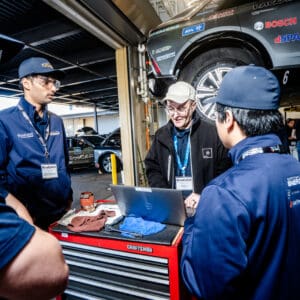
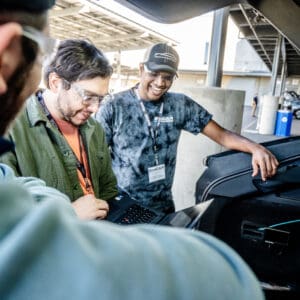
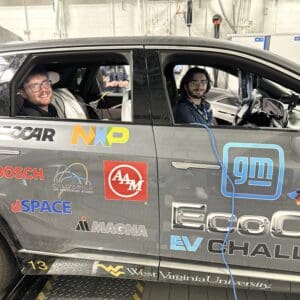
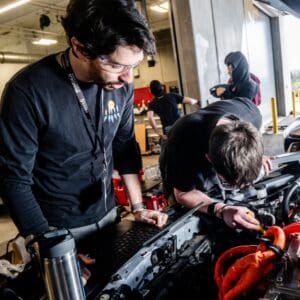
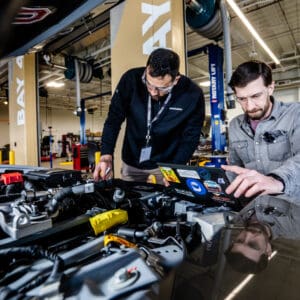
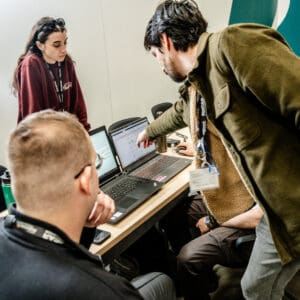
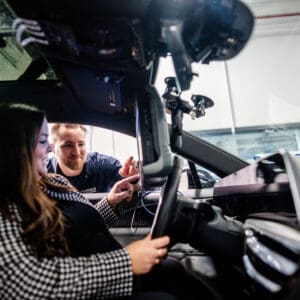
The Year 3 Dynamometer Testing Event at CARB marked a pivotal moment in the EcoCAR EV Challenge—blending innovation, collaboration, and education in a real-world testing environment. From rigorous energy consumption assessments to hands-on engagement with industry experts, the event underscored the unique value of experiential learning in preparing students for careers in advanced mobility.
“I’m incredibly proud of the teams for their hard work and dedication throughout the dyno testing event. They not only demonstrated technical expertise but also showcased the innovation and problem-solving skills needed to drive the future of connected and automated vehicles,” said Hamilton. “As we look ahead to the Year 3 competition, I’m excited to see how these students continue to push the boundaries of CAV technology, and I’m confident they’ll make an even greater impact in advancing the industry.”
Stay tuned for Year 3 Competition Updates!
To see more highlights from the event, be sure to check out the photos HERE
